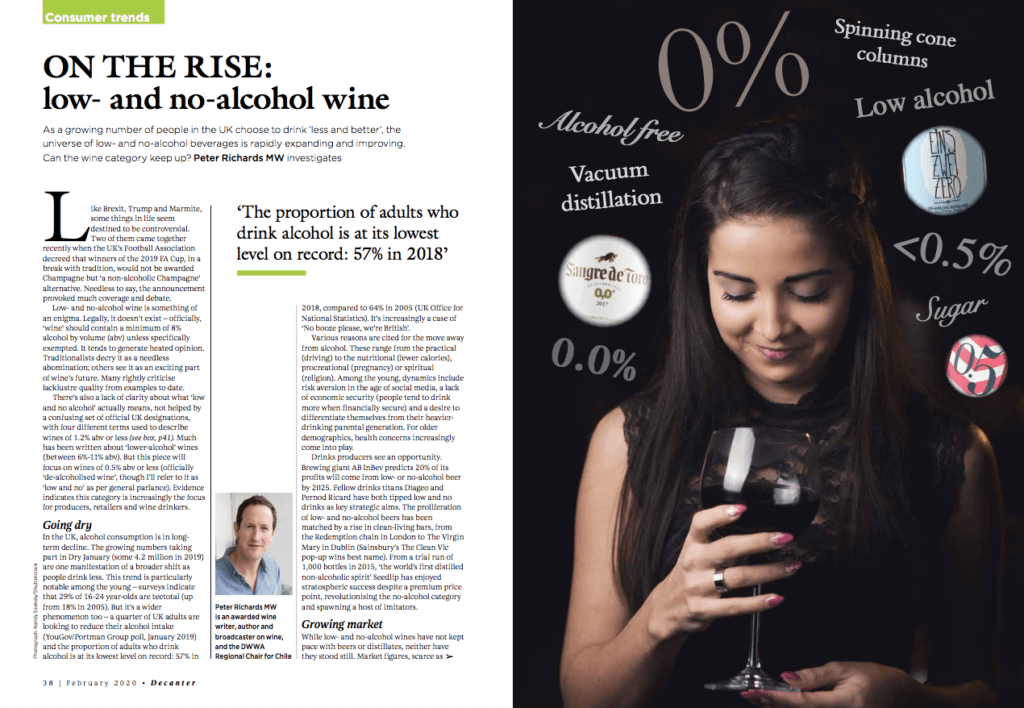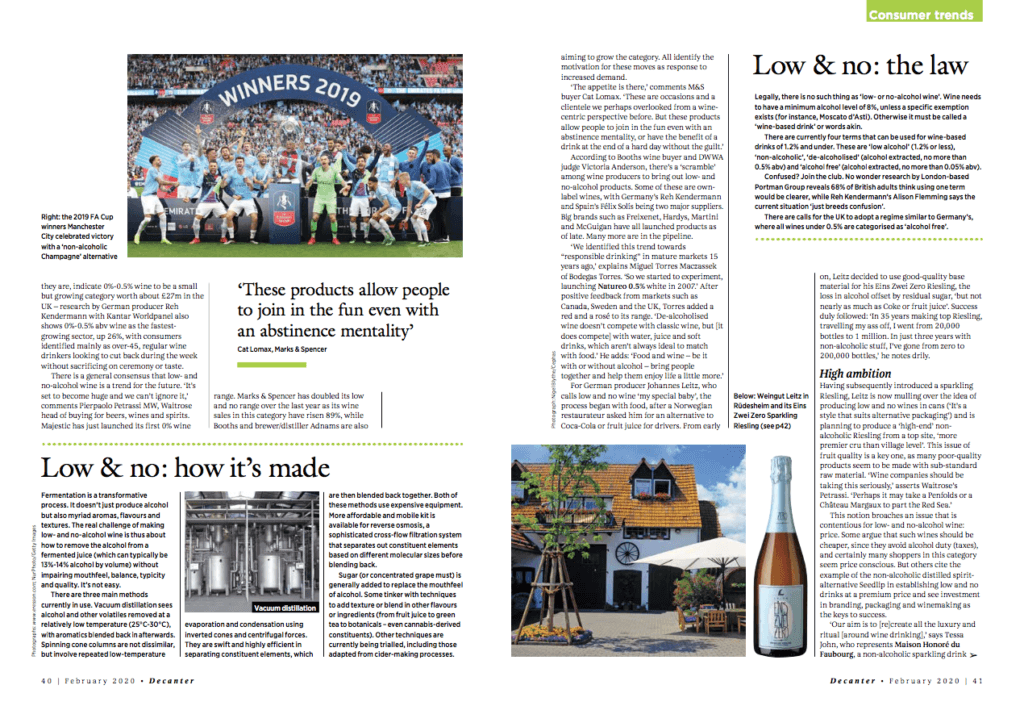On no-alcohol wine
Did you know that the winners of the FA Cup, one of Britain’s biggest sporting events, now celebrate (and dutifully spray each other) with non alcoholic sparkling ‘wine’ rather than champagne?
It’s a small detail, a pub quiz oddity if you like, but it made headlines when the change was announced (quite sensibly, really) in 2019.
It’s a sign of a general shift towards no-and-low alcohol drinks that’s been going on a while now and shows no sign of abating. Beer has been particularly proactive in this regard, and now acceptable no-alcohol beers are easy to find. Even no-alcohol ‘spirits’ have stolen a march, with the likes of Seedlip having grown exponentially since release. Right place, right time, right product.
Wine, however, has been slow on the uptake. There is even reticence to recognise a wine-like drink with no alcohol as wine. Current regulations mean that no-alcohol wine doesn’t actually exist – it has to be called something else. Meanwhile, legions of wine lovers fancying a night off the sauce…turn to beer. Or water.
This piece was about two years in the researching. I find all this fascinating and firmly believe wine needs to embrace the low-and-no-alcohol future. Heads in sand would be potentially catastrophic for business – AB Inbev is predicting a fifth of its global profits will come from low and no alcohol beer by 2025.
In the meantime, successful NOLO wine brands are scarce on the ground. But I’ve tried promising ones lately from producers like Sinzero, Leitz, Torres, Adnams and Freixenet.
The race is on to crack NOLO wine. Who will emerge as the front runners?
[On the Rise: low- and no-alcohol wine appeared in Decanter magazine’s January 2020 edition]
Download Article



